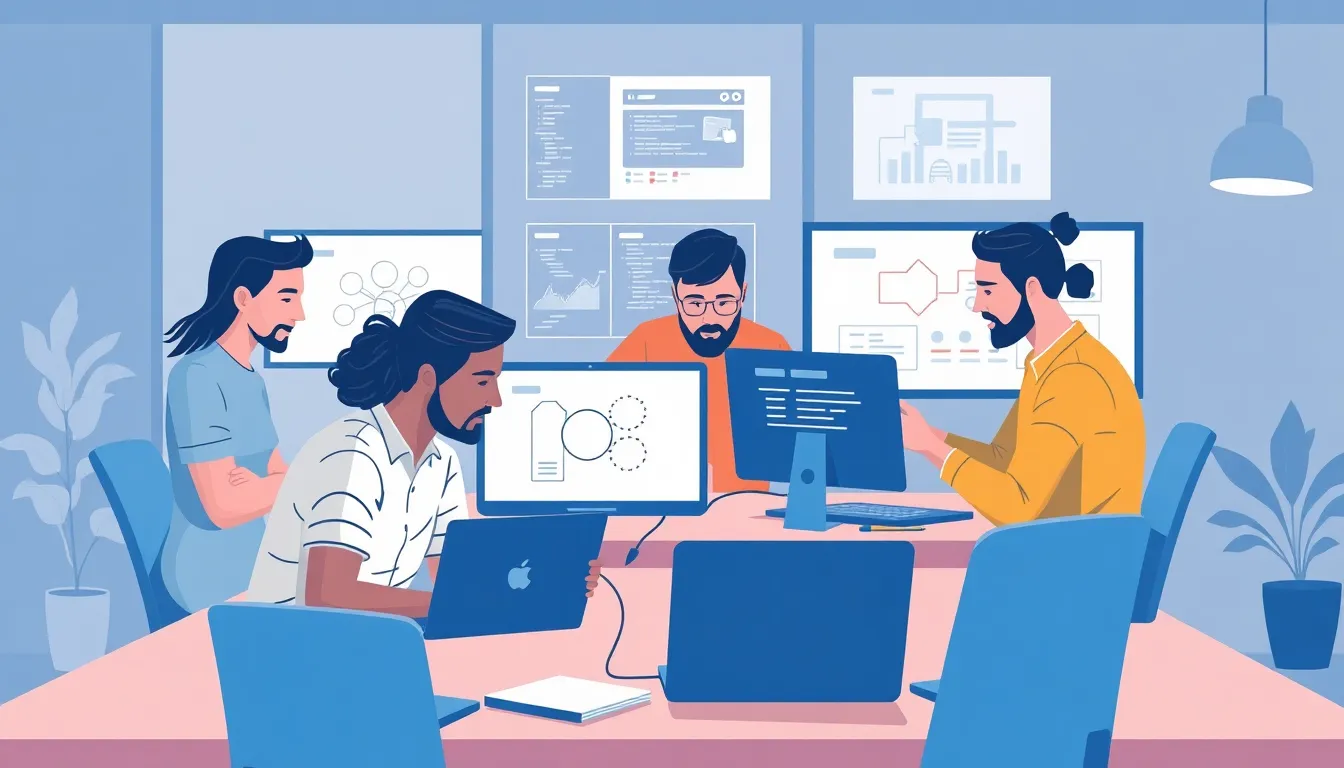In the digital age, a website isn’t just a nice-to-have; it’s a must-have. But before diving into the world of web development, one question looms large: how much is this going to cost? Spoiler alert: it’s not as simple as picking a number out of a hat. The cost of web development can vary more than a cat video on the internet.
From basic sites that could be whipped up in a weekend to complex platforms that require a small army of developers, understanding the factors that influence these costs is crucial. Whether you’re a small business owner or an aspiring entrepreneur, knowing what to expect can help you budget wisely and avoid those dreaded financial surprises. Let’s break it down and explore the ins and outs of web development costs, ensuring you’re equipped with the knowledge to make the best investment for your online presence.
Web Development Cost
Understanding web development cost involves examining several crucial elements. Costs fluctuate based on specific requirements and desired outcomes.
Factors Influencing Cost
Website complexity plays a significant role in determining the total cost. Custom features, CMS integration, and eCommerce functionality typically increase expenses. Additionally, the choice of design influences the budget. Custom designs often cost more than templates. Developer expertise also affects pricing; seasoned developers command higher rates due to their experience and skill. Ongoing maintenance and support should factor into overall costs. Depending on the chosen company or freelancer, these services may vary substantially. Lastly, hosting and domain registration fees contribute to the expense, with options ranging from shared hosting to dedicated servers.
Types of Web Development
Web development can be categorized into various types based on specific needs. Static websites offer basic functionality, suitable for informative purposes at lower costs. Dynamic websites, offering personalized content, typically incur higher expenses due to their complexity. ECommerce platforms cater to online stores, involving functionality for payment gateways and user accounts. These systems demand robust security measures, influencing development costs significantly. Furthermore, web applications provide interactive features like user login and data processing. These applications require extensive development, often resulting in higher prices. Each type of web development presents unique costs linked to functionality, design, and maintenance.
Breakdown of Expenses

Understanding the breakdown of web development expenses helps in budgeting accurately. Several factors contribute to overall costs.
Design Costs
Designing a website often involves both layout and user experience. Custom designs typically cost between $2,000 and $10,000, depending on complexity. Templates provide a more affordable option, with prices ranging from $100 to $500. Attractiveness of a website can significantly influence user engagement. Therefore, investing in professional design services usually leads to higher user satisfaction and retention.
Development Costs
Development costs vary widely based on the website’s specifications. Simple static sites may cost around $1,500, while complex dynamic sites can reach $25,000 or more. Custom features, such as databases and APIs, add to these expenses. Developers typically charge hourly rates ranging from $50 to $200 based on experience. Assessing the project’s requirements upfront clarifies these costs.
Maintenance and Hosting Costs
Ongoing maintenance ensures a website remains functional and secure. Monthly maintenance fees often range from $50 to $300, depending on the service provider. Hosting costs also play a crucial role, with shared hosting starting at $5 per month and dedicated servers costing upwards of $100 per month. Domain registration generally incurs an annual fee of $10 to $20. Continuous support helps avoid costly issues later, making long-term budgeting essential.
Cost Management Strategies
Effective cost management in web development ensures staying within budget while achieving project goals. Understanding budget allocation and team selection helps minimize expenses.
Budgeting Tips
Establishing a clear budget serves as the foundation for any web development project. Identify all potential costs, including design, development, and ongoing maintenance. Allocate sufficient funds to each category to prevent overspending. Prioritize essential features over luxury additions, ensuring the website remains functional. Reviewing costs periodically throughout the project allows for necessary adjustments. Setting aside 10% to 20% of the total budget for unexpected expenses captures potential surprises.
Choosing the Right Team
Selecting the right development team influences budget management and project success. Assessing expertise is crucial; experienced developers command higher rates, but their efficiency often offsets costs. Evaluating portfolios provides insight into a team’s capabilities and previous work. Asking for client testimonials assures quality and reliability. Consider remote teams or freelancers to reduce costs while gaining access to a broader skill set. Facilitating clear communication with the chosen team enhances project collaboration, keeping the budget on track.
Trends in Web Development Pricing
Web development pricing trends show significant variations based on several factors. Increased demand for complex features drives up costs for more advanced websites. Custom designs now command higher prices, ranging from $2,000 to $10,000, as businesses aim for unique online identities. Utilizing templates remains a budget-friendly option, typically costing between $100 and $500.
Development costs vary widely across website types. Static sites generally start at $1,500, while dynamic sites can easily exceed $25,000. Businesses looking to create eCommerce platforms must consider additional expenses related to shopping cart integration and payment processing. Ongoing maintenance presents another cost layer, with fees averaging between $50 and $300 monthly, depending on website complexity.
Hosting also plays a significant role in overall pricing. Shared hosting services begin around $5 per month, while dedicated hosting solutions are considerably more expensive. Domain registration typically incurs an annual cost of $10 to $20, contributing to the total investment required for a professional web presence.
Investment in web development not only includes initial costs but also ongoing expenses. Budget management strategies recommend allocating 10% to 20% of the total budget for unexpected expenses. Regular cost reviews during the project lifecycle can help businesses adapt as needs evolve.
Emerging trends such as the shift towards mobile-first design further influence costs. As more users rely on mobile devices, businesses prioritize responsive designs. Clear communication with development teams ensures project goals align with budgetary constraints, fostering successful outcomes.
Conclusion
Understanding web development costs is essential for small business owners and entrepreneurs. By recognizing the various factors that influence these expenses, they can make informed decisions that align with their budgets and project goals.
Prioritizing essential features and maintaining clear communication with development teams can help manage costs effectively. Additionally setting aside a portion of the budget for unexpected expenses ensures smoother project execution.
As the digital landscape continues to evolve, staying updated on pricing trends and development options will empower individuals to create impactful online presences without breaking the bank.

